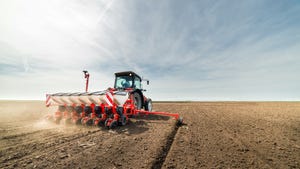
Midwestern farmers usually fare well during years that El Niño weather patterns affect the growing season. El Niño years usually produce better-than-average crops. But that can change if El Niño is followed immediately by its antithesis, a cooling of waters in the Pacific Ocean known as La Niña.
El Niño, the name given to a band of warm water that tends to develop in the central Pacific Ocean, emerged once again at the end of 2015 to become one of the strongest examples of the phenomenon on record, helping to fuel storms that have rippled across Southern California and Arizona.

WEATHER OUTLOOK: “We’ll probably know by mid-April if we are going to stay in an El Niño pattern or if it is going to leave for the 2016 growing season. By mid-April we should be able to make a pretty good estimate of what the national yield prospects will be,” says ISU’s Elwynn Taylor.
Will the current El Niño weather pattern switch to La Niña?
Elwynn Taylor, Extension climatologist at Iowa State University, studies the weather. He says history shows that El Niño might be good news for Iowa farmers if the trend is long-lived enough to affect the growing season. Years during which an El Niño extends into a growing season have resulted in above-trend yields in the Midwest for corn and soybeans 70% of the time, he says.
But in years such as 1983 and 1987-88 strong El Niño events morphed into equally strong La Niñas, resulting in droughts that hurt crops. However, Taylor says there’s no guarantee this year’s El Niño will give way to La Niña.
“La Niña doesn’t always follow an El Niño,” he points out. “There are more El Niño events than La Niña.”
Won’t get a clearer picture of El Niño’s effect until spring
There are few certainties any time El Niño materializes, muddying the weather picture for anyone trying to predict the results. Farmers might not have a clear idea of how this year’s strong El Niño will affect them in the 2016 growing season until sometime this spring. “All El Niños seem to have their own personalities,” Taylor says. “This one comes in by most measures as stronger than usual.”
He adds, “If the current El Niño persists, at least into July, its effects will probably last another two months and that should get us through this year’s growing season for both corn and soybeans with a 70% chance of above-trend yield.”
Unusually wet December sets stage for good yields in 2016
El Niño affects weather by upsetting atmospheric pressure patterns. Every seven years or so, the phenomenon grows strong enough to change weather across the U.S. and beyond. Usually, that results in warmer-than-usual winters and cooler-than-usual summers in the Midwest. It also often creates wetter-than-usual weather in the Southwest.
Taylor also says that the widespread rainfall in December 2015 soaked much of the soil in the Midwest, meaning virtually all drainage tiles from Iowa to Ohio are running now, draining off the excess moisture. That raises concerns that additional moisture from rainfall in the spring could slow planting by keeping farmers out of their fields. But it also means crops will enter the 2016 growing season with a full tank of moisture held in reserve in the subsoil.
About the Author(s)
You May Also Like




